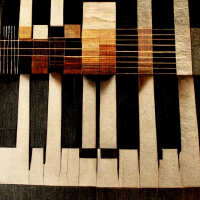Loopy Pro: Create music, your way.
What is Loopy Pro? — Loopy Pro is a powerful, flexible, and intuitive live looper, sampler, clip launcher and DAW for iPhone and iPad. At its core, it allows you to record and layer sounds in real-time to create complex musical arrangements. But it doesn’t stop there—Loopy Pro offers advanced tools to customize your workflow, build dynamic performance setups, and create a seamless connection between instruments, effects, and external gear.
Use it for live looping, sequencing, arranging, mixing, and much more. Whether you're a live performer, a producer, or just experimenting with sound, Loopy Pro helps you take control of your creative process.
Download on the App StoreLoopy Pro is your all-in-one musical toolkit. Try it for free today.
Scythe Synthesizer (from BitMask Studio) RETIRED
Scythe Synthesizer is a wavetable synthesizer from BitMask Studio. There is also a different synth from another developer called Scythe.
This topic is for tips, tricks and knowledge sharing and not for sharing opinions or discussing the software. Please use the main forum for such discussions,



Comments
Scythe wavetables contain up to 256 frames (or slices or waveforms).
Audio to Wavetable Conversion
Scythe can create wavetables from audio imported from AudioShare. The maximum number of waveforms per wavetable is 256. Scythe uses a proprietary algorithm for analyzing audio and converting the audio to a wavetable. There is not a fixed ratio of audio duration to wavetable frame. The spectral (harmonic) complexity of the sound influences the conversion. I have had 1 second long sound that resulted in a full 256 frame wavetable and another sound whose 2.8 seconds resulted in 254 frames.
When I imported a 220Hz sine wave, the frames (waveforms) were very close (if not precisely), two cycles wide.
Jarryd Hall, Scythe's creator, told me:
An overview video by Pants of Death is found at:
https://www.bitmaskstudio.com/scythe-demo-pantsofdeath/
A tutorial by the developer on the Wavetable Creator IAP. You can create your own wavetables with this wavetable editor.
Some more Scythe videos:
From the developer. His previews highlight the edgier side of Scythe. It is great for pads and drones, though, too.
Preview 1:

Preview 2:

Preview 3:

Overview:

In-Depth Guide and Tutorial:

I entered this information into the wiki:
https://wiki.audiob.us/app_tutorials/scythesynth/wtf
Am working on putting the rest of the Scythe Synth info from this thread there too.
@InfoCheck : i wonder if app_tutorials is the correct namespace for articles about apps and plugins -- as there may be articles that aren't tutorials.
Maybe we should get some guidance from @Michael. My gut feeling is that if there is going to be a separate namespace for articles like this that it be something like "apps and plugins" and that if we have a subdirectory for tutorials that it be used with care.
It looks like the content in this topic got moved to a bunch of pages. In my opinion, it all belongs on one Scythe Synth page rather than being split up. Until pages get humongously long, I've found it most helpful for there to be a single page that one has to go.
Would you have an objection to my consolidating the info into one page?
What do you think?
@espiegel123 I prefer to have smaller pages as it’s easier to revise and add to. Longer documents are more difficult to edit and can break more easily. On smaller iOS devices like phones, the longer pages are harder to track. It also allows people to focus on what’s of interest to them rather than having to read or scan one long article. Smaller pages are also more amendable to cross referencing as they’re limited in scope.
I imagine you could combine pages together to display, but combining and then separating out pages if you change your mind is difficult.
In addition, as the wiki is in its infancy, the initial pages are just a skeleton of the content that will appear later. More smaller pages will facilitate fleshing out the more detailed content.
This topic is now closed as the information has migrated to the Audiobus forum wiki.